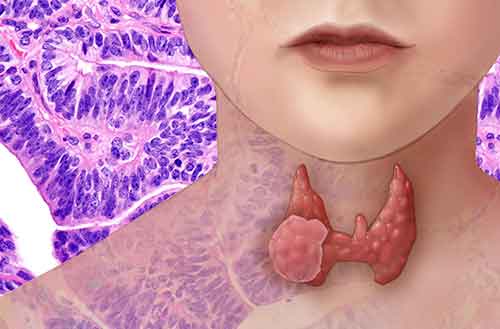
As new therapies for thyroid cancer advance, studies are revealing more about which markers to look for in specific cases. Veracyte has just released data from three studies about ALK, BRAF, NTRK, and RET based on the company’s Afirma Xpression Atlas RNA sequencing analyses and Veracyte’s extensive biorepository of thyroid nodule fine needle aspiration (FNA) samples from thyroid cancer patients. The data were presented the recent 89th Annual Meeting of the American Thyroid Association (ATA).
“NTRK fusion inhibitors have received pan-cancer FDA approval and clinical trials have included selective inhibitors of ALK, BRAF, NTRK and RET, which makes their detection in patients with thyroid cancer of interest to physicians,” said Mimi I. Hu, M.D., professor at The University of Texas MD Anderson Cancer Center, who presented the findings in a poster at the ATA. “As our understanding of the role of genomics in thyroid cancer advances, this information offers the potential to optimize initial treatment, predict response to treatment and prioritize selective targeted therapy should systemic treatment be needed.”
In the United States alone it is estimated that in 2016 approximately 64,000 new patients were diagnosed with thyroid cancer. In 2013, the last year for which statistics are available, over 630,000 patients were living with thyroid cancer in the United States.
Afirma Xpression Atlas is designed to help physicians tailor surgical or treatment options for patients whose thyroid nodules are cancerous or suspicious for cancer. The RNA sequencing-based test measures 761 DNA variants and 130 RNA fusions in over 500 genes that have been linked to thyroid cancer.
In one study, researchers assessed the frequency of ALK, BRAF, NTRK and RET fusions in nearly 48,000 consecutive patients whose thyroid nodule FNA samples were deemed indeterminate, suspicious for malignancy, or malignant (Bethesda III/IV, V and VI categories, respectively) by cytopathology. The researchers found that 425 (0.89 percent) of the FNA samples harbored one of the alterations. NTRK fusions were the most common at 0.38 percent, followed by RET (0.32 percent), BRAF (0.13 percent) and ALK (0.06 percent). Additionally, RNA whole transcriptome sequencing demonstrated differences in the prevalence of these four fusions across Bethesda categories, with Bethesda V being the highest.
In a second study, researchers evaluated the positive predictive value of the NTRK, RET, BRAF and ALK fusions in 58 patients with indeterminate thyroid nodules (Bethesda III/IV categories) from Veracyte’s biorepository for whom surgical pathology diagnoses were available. They found that NTRK and RET fusions were associated with malignancy in 28 of 30 nodules, while risk of malignancy was lower among nodules with ALK (67%) or BRAF (75%).
The third study also used RNA sequencing data on nearly 48,000 thyroid nodule FNA samples (Bethesda categories III-VI). That study identified 263 co-occurrences of gene fusions and variants that were previously considered “mutually exclusive.”
“The findings from these three studies underscore the power of our extensive biorepository of thyroid nodule FNA samples and our optimized RNA sequencing platform to advance understanding of the genomic underpinnings of thyroid cancer and to better capture the biology of thyroid lesions,” said Richard T. Kloos, M.D., senior medical director, endocrinology, at Veracyte. “As precision medicine therapies that target specific gene alterations emerge, understanding individual patients’ genomic profiles becomes increasingly important to physicians. Our Afirma Xpression Atlas provides this information at the same time as initial diagnosis with the Afirma Genomic Sequencing Classifier, or GSC, to help inform treatment decisions.”













